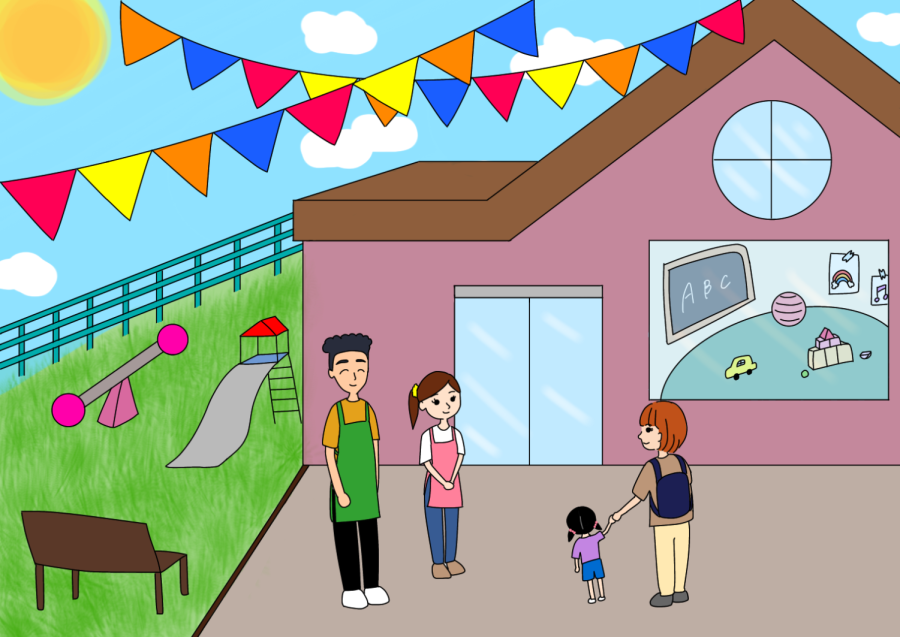Block parties in local neighborhoods are usually so friends and families can gather together, bond and express themselves. But for this block party, it contained a sculpture 14 feet tall, 18 feet wide, 378 blocks and 150 people. This wasn’t just your ordinary block party, this was Eric Johnson’s sculpture exhibit titled, “The Maize.”
The Maize was envisioned by Johnson as a way to gather a community together. He asked people from all areas of his life such as family and friends to take part in this sculpture. “Originally, what I wanted to do was bring everyone together as a community to make this happen,” Johnson said. “Usually in art, people express themselves in how they feel and what they love to do and this is what it’s all about,” he added.
A wide range of family and friends such as gallerists, curators and collectors, to his personal friends and neighbors from his San Pedro neighborhood, were invited built these individual “kernels”. They attended Johnson’s studio where they were able to create their individual blocks called kernels. Kernels are like little blocks or stones in which participants were able to express themselves in.
“My father did that one(pointing to his father’s kernel) and before he passed away, he took one of his bullets and decided he wanted to put it in,” Johnson said. Among some of the best were Johnson’s own, “beehive kernel.” In it, Johnson took a beehive, and managed to get all of the bees in the kernel placing them throughout along with gold and brown resin.
The process to create a designed kernel is quite complex. Artist Marshall Astor, who contributed 8 kernels says it took hard work to create them. “Each one took about five to six hours,” Astor said. “First you get a molded fiber glass then wax it. After that you put a little vinyl alcohol in it, slosh in 3,4 coats of resin then put in what you want,” Astor explained.
But what makes the whole experience great is the process of waiting for the resins to harden. Resins are brightly colored like paint in which were modified by the inclusion of small objects, from decorative baubles, toys, fingernails, bees, bullets and toys to other personal mementos. While people wait for the resins to dry up, they often bond with one another, tell stories and get to know each other. “I got to know a lot of people because I waited for a lot of them to dry up,” artist Chris Wilhamin, who contributed 25 kernels, jokingly said.
“From war stories, to little kids playing, it was just something special to be a part of,” Wilhamin said. Since the kernels were in separate blocks, Wilhamin says that the toughest part was getting them all in one piece to make them stand 14 feet tall and make it look like a monument. “We were here, eight hours a day, five days a week to put this thing together but it was worth it,” Wilhamin said.
The reason why it is called “The Maize project” can be traced all the way back to the original Native Americans. The word “maize” in latin means “grains”, “plant” or “crop.” It can also mean corn in the Spanish language. Johnson said we need to bring back a sense of importance to corn or “maize” just like the Indians did. “The blue Indian corn represents the color of Americans,” Johnson said. “Back then they gave so much value to it and now, we are just altering it to fuel and making money off it,” he added. “Let’s give more value to it.”
That aspect of this whole project that Johnson considers most important is not only bringing his family together, but bringing all of America together. “Native Americans put value in the blue Indian corn, watched out for their tribes and loved one another,” Johnson said. “Us Americans need to rekindle that kind of value where we love everyone and watch out for one another,” he added. Kristine Newhouse, Curator of The Civic center arts museum says that people of all facts of life appreciate the sculpture. Even for those that are not a fan of art, people come in amazed of the 378 individually created sculpture. “A lot of people are responding very well to the piece because they can connect to it,” Newhouse said. “When someone sees the little candies placed on a kernel they think to themselves how cool it is to put a bunch of candies in an artwork,” she added.
The Maize Project will be on display from Sept 6-Nov 1, 2008. All admission is free at the Civic Center Arts museum and it will be opened Tuesday-Saturday, 11 am to 5 pm. “To see the people invest their own project, their time and effort was just amazing,” Newhouse said. “(Johnson) gave back in a major way, he even gave up his Saturdays to built this sculpture. Everyone from artists, students and children appreciate this form of art,” Newhouse said.




